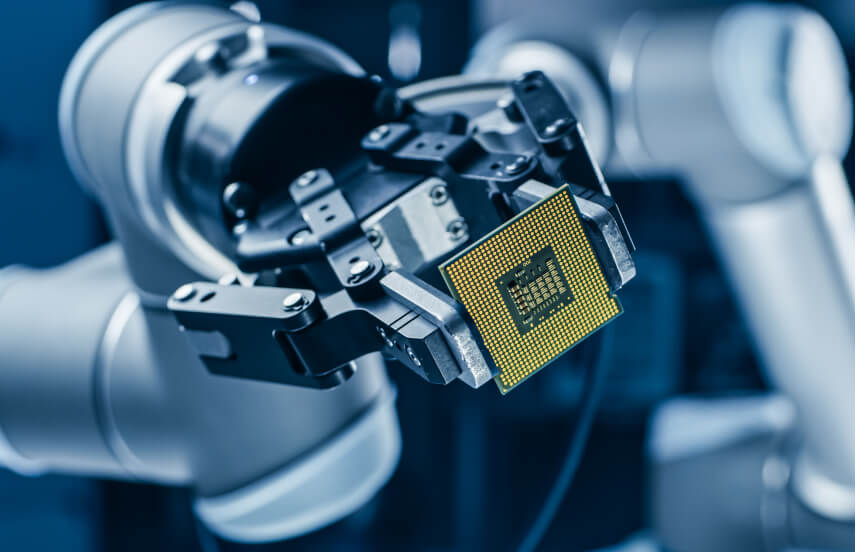Market expectations concerning M&A dynamics were made null and void in 2020. However, the pessimistic outlook at the beginning of the Covid-situation seems to have been disproved. This is especially true in the tech market, where mergers and acquisitions surged in Q3. ‘Transactions in tech and telecommunications totaled $205 billion in the July through September period, nearly six times as much as in the second quarter and the second-highest quarterly level in nearly two decades’, quotes the WSJ a report from 451 Research.
There are expectations that as the global economy moves toward recovery, investors will likely be targeting technology providers. During a topical M&A Community webinar, lots of questions were asked about the outlook for the current situation as well as trends to keep in mind in the industry. Here are some of them, answered by our panelists, from the valuation of AI assets to IoT, blockchain, and ESG (Environmental and Social Governance) in business.
How to value AI assets?
Clearly, it depends heavily on the business you’re looking at. If you’ve got an early-stage company which is making money quickly, it would typically be valued by its revenue. A reasonably successful company might be valued at a six to ten times the revenue number.
If it is a really hot B2B SaaS business, it could be valued at thirty times its revenue number or even more. However, these examples are extremely rare and are actually driven by their true success.
Here, nevertheless, some cautionary words are necessary. Now, AI is often stuck on logos to make them more ‘exciting’, just as people did with ‘blockchain’ a couple of years ago. What you really need to understand clearly is how the business you’re investing in is going to make a profit over time.
The learnings over the years are that all of these businesses eventually end up being valued with reference to generating real cash profits, as companies like Google and Facebook do today.
The other question on the valuation of AI assets is data, i.e. what data a company has and how proprietary that data is. If it has data that investors are interested in, and that is not easily obtainable, it can make a company a good target.
One more factor that can impact the value of an AI company is people. It is not the data alone which is essential as you would definitely want to keep the people who can work with this data, who understand it and can build upon it with their expertise.
The third one, the ‘secret sauce’ in this recipe, would be the data science models that are able to extract valuable insights from this data.
Where is the United States on the AI curve?
There is an arms race going on, especially with China. A tremendous amount of effort and resources is going into developing AI technologies in China. In the US, some amazing technologies and innovations are still emerging in Silicon Valley. The Chinese, meanwhile, are not only copying those but also furthering the technology.
What can make a difference to the American position in this ‘competition’? One leading example is the US investment in STEM, getting kids into science and technology, into newer kinds of disciplines like data science.
Definitely, on a global scale, it is a US vs China situation, and then other countries, namely the EU, coming into play. Nevertheless, it is still a bipolar competition. Currently, most of the innovations are coming from the American side.
Now, however, there are discussions that AI has reached the stage when it’s more about engineering than science. The latter is still the US prerogative. Meanwhile, Beijing has been investing heavily in engineering, so nowadays you can see various combinations of existing technologies as well as the widespread use of them in China.
It is no wonder, given the size of the Chinese population. If you want to hit a million, ten million, a hundred million users in the Western world, it may take years. But in China, you can do it in a couple of months! That’s how fast things are moving there. So, in terms of engineering, the Chinese are probably going to be pulling ahead soon. Still, on the entrepreneurial and scientific sides, the USA has the upper hand.
At the same time, quantum computing is an area to look at. We can expect its development to ramp up in the next 2-5 years. Of course, quantum computing will not take over everything that AI is doing; there are only certain types of applications where quantum computing will be good.
What are the lifecycle issues and risks for IoT and other data-centric technologies during M&As?
Technology has broadly been an area with some spectacular disasters in M&A. One of the most ‘prominent’ of them was, perhaps, HP’s acquisition of Autonomy Corp. for $11 bn that is still rumbling through the courts.
The fundamental issues concerning M&A in IoT, or in tech in general are; how will it help you to create something that your customers value, how will it generate revenue, how will it allow you to be more cost-efficient or how can it help make your business less volatile. In other words, with all these factors to consider, it’s easy to get lost in the excitement of buying new technology.
One of the main challenges is connected to security issues. If you are a large corporation, acquiring an IoT business, it would be relatively easy for you to ensure that a system is working, but really difficult to lock it down in terms of security.
Another question, related to the IoT sphere: Are these smart sensors really so smart? There could be billions of sensors gathering and sending data at every moment, but are they really necessary to make decisions at a local level? It’s clear that you’ll need to clearly understand where and how you make decisions, and how the IoT sensors can in fact help you to do that.
How important is it for a CFO to be ESG-competent?
Indeed, ESG is becoming a really big thing now. Every CFO I know got hit with these questions through this year. In many cases, they have been coming from investment managers who don’t have their heads around this question very well yet.
Let’s put aside all of the ESG excitement and focus on the fact that there are a lot of serious underlying issues that relate to the efficiency of business operations. How does a business use the resources available to it? What kind of risks does it take? What do its relations with stakeholders look like? Which factors may impact its growth over time?
So, firstly, CFOs have to fully understand where the underlying investors are coming from. Secondly, one needs to step back from the noise and say, ‘Can we look at this in a way that will allow us to drive our business better?’ That is, instead of constantly worrying about ESG-compliance, you can make it into something you can be excited about and use it to fuel the growth of your business.
The third challenge is to realize that there are much bigger things going on. I mean, we are going through the ‘robot revolution’, in which we are automating a big slice of the tertiary economy. It is causing huge shifts in the workforce, and if you don’t manage that, it will create substantial risks for individual businesses, as well as entire economies.
What can we expect from blockchain technology?
By their definition, blockchain technologies require multiple parties to come together. It is essentially a consortium play. So, to come to a joint decision, you’ll need to unite dozens of businesses, lawyers, organizations, etc. Their agreement on some common standards is quite difficult, thus far it has been a substantial barrier to the implementation of blockchain.
Fundamentally, I believe, this technology has potential. After a surge in popularity a couple of years ago, though, it has met several challenges and slowed down.





